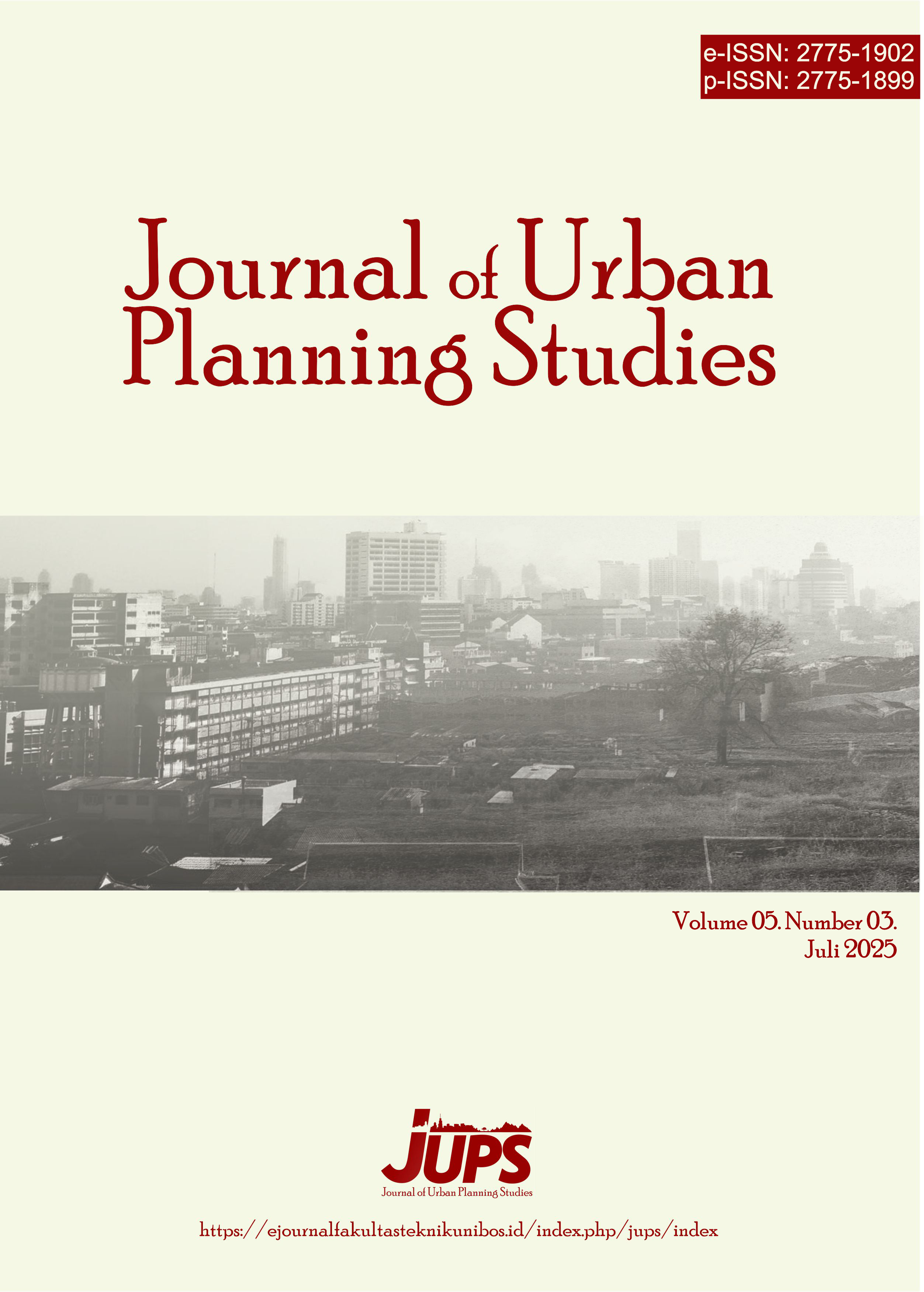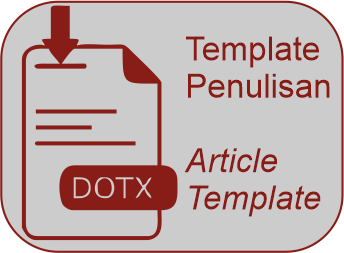Pengaruh Tingkat Aksesibilitas Terhadap Kondisi Ekonomi Masyarakat Desa Paliorong Kecamatan Masanda Kabupaten Tana Toraja
DOI:
https://doi.org/10.35965/jups.v5i3.660Kata Kunci:
Tingkat Aksesibilitas, Kondisi Ekonomi, MasyarakatAbstrak
Abstract. The purpose of this study was to determine the effect of accessibility levels on the economic conditions of the community in Paliorong Village and to formulate strategies for increasing accessibility in improving the economic conditions of the community. This study is a type of quantitative research using survey methods and questionnaire distribution. The data obtained were then analyzed using multiple linear regression analysis and analytical hierarchy process (AHP).
Abstrak. Tujuan dari penelitian ini adalah untuk mengetahui pengaruh tingkat aksesibilitas terhadap kondisi ekonomi masyarakat di Desa Paliorong dan merumuskan strategi peningkatan aksesibilitas dalam meningkatkan kondisi ekonomi masyarakat. Penelitian ini adalah jenis penelitian kuantitatif dengan menggunakan metode survey dan penyebaran kuisioner. Data yang diperoleh selanjutnya dianalisis dengan analisis regresi linear berganda dan analytical hierarcy prosess (AHP).
Referensi
Breines, M. R. (2021).Higher Education and Economic Mobility. https://doi.org/10.1007/978-981-16-3537-3_3
Bujaki, M., & Lento, C. (2025). Boreal First Nation: An Assurance and Financial Reporting Case on a Remote Indigenous Community.Accounting Perspectives. https://doi.org/10.1111/1911-3838.12408
Chlipała, P., & Żbikowska, A. (2023). Data completion and verification in social research projects based on the third methodological path.Zeszyty Naukowe. https://doi.org/10.29119/1641-3466.2022.166.7
Coşar, A. K., Demir, B., Ghose, D., & Young, N. (2021).Road Capacity, Domestic Trade and Regional Outcomes.
Davies, A. (2021).COVID-19 and ICT-Supported Remote Working: Opportunities for Rural Economies. https://doi.org/10.3390/WORLD2010010
Dogan, A. (2023).Qualitative methods in economic sciences. https://doi.org/10.4337/9781800376199.00016
Duchin, R., Gao, J., & Xu, Q. (2025). Sustainability or Greenwashing: Evidence from the Asset Market for Industrial Pollution.The Journal of Finance. https://doi.org/10.1111/jofi.13412
Fan, S., & Zhang, X. (2004). Infrastructure and regional economic development in rural China.China Economic Review. https://doi.org/10.1016/J.CHIECO.2004.03.001
Georgescu, I., & Kinnunen, J. (2021).The Digital Effectiveness on Economic Inequality: A Computational Approach. https://doi.org/10.1007/978-3-030-59972-0_16
Hidalgo, R. (2020).Public Transport as a Public Place: Urban Insertion Strategies of the Coquimbo – La Serena Light Rail Project. https://doi.org/10.1088/1755-1315/503/1/012090
Igiebor, G. O., & Okonmah, E. (2022). The application and implication of combining quantitative and qualitative data in the social sciences: a third methodological movement in context.WILBERFORCE JOURNAL OF THE SOCIAL SCIENCES. https://doi.org/10.36108/wjss/2202.70.0250
Kuklina, M., Filippova, V., Savvinova, A., Fedorova, A., & Itegelova, A. (2022). Influence of transport accessibility on the development of remote areas of residence of the indigenous people of the North.Transportation Research Procedia. https://doi.org/10.1016/j.trpro.2022.05.005
Liang, Y., Li, S., & Zeng, J. (2022). Examining the impact of multidimensional accessibility on regional poverty in Laos.Applied Geography. https://doi.org/10.1016/j.apgeog.2022.102789
Liu, W., Cao, Y., Wu, W., & Guo, J. (2020). Spatial impact analysis of trans-Yangtze highway fixed links: A case study of the Yangtze River Delta, China.Journal of Transport Geography. https://doi.org/10.1016/J.JTRANGEO.2020.102822
Lu, H., Zhao, P., Hu, H., Yan, J., & Chen, X.-P. (2023). Exploring the heterogeneous impact of road infrastructure on rural residents’ income: Evidence from nationwide panel data in China.Transport Policy. https://doi.org/10.1016/j.tranpol.2023.02.019
LU, Y. (2005). Review and Prospectation of Accessibility Research.Progress in Geography.
Marein, B. (2022). Colonial Roads and Regional Inequality.Journal of Urban Economics. https://doi.org/10.1016/j.jue.2022.103492
Ojima, D. (2021).Human Capital Investment and Economic Growth in Nigeria: 1989-2019. https://doi.org/10.47191/IJSSHR/V4-I8-08
Shevchenko, K. (2023). The impact of the implementation of the strategic priority «quality education throughout life» on the development of employment in the region.Экономическое Возрождение России. https://doi.org/10.37930/1990-9780-2023-1-75-140-148
Shirahmadi, S., Bashirian, S., Soltanian, A. R., Karimi-shahanjarini, A., & Vahdatinia, F. (2024). Effectiveness of theory-based educational interventions of promoting oral health among elementary school students.BMC Public Health. https://doi.org/10.1186/s12889-023-17528-0
Tiwasing, P., Clark, B., & Gkartzios, M. (2022). How can rural businesses thrive in the digital economy? A UK perspective.Heliyon. https://doi.org/10.1016/j.heliyon.2022.e10745
Wan, G., Wang, X., Zhang, R., & Zhang, X. (2022). The impact of road infrastructure on economic circulation: Market expansion and input cost saving.Economic Modelling. https://doi.org/10.1016/j.econmod.2022.105854
Xu, B. (2022). Assessing the Impact of Transportation Infrastructure on Rural Residents’ Income: Using the Quantile Regression Approach.Journal of Reviews on Global Economics. https://doi.org/10.6000/1929-7092.2022.11.02
Yannis, G., & Chaziris, A. (2022). Transport System and Infrastructure.Transportation Research Procedia. https://doi.org/10.1016/j.trpro.2021.12.002
##submission.downloads##
Diterbitkan
Cara Mengutip
Terbitan
Bagian
Lisensi
Hak Cipta (c) 2025 Regina Suppulangi, Kamran Aksa, Rusneni

Artikel ini berlisensi Creative Commons Attribution 4.0 International License.













